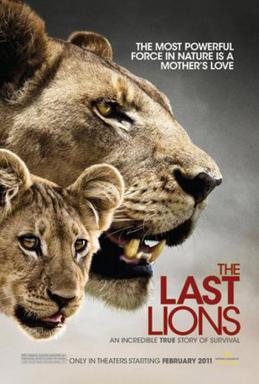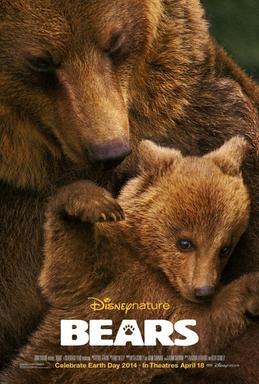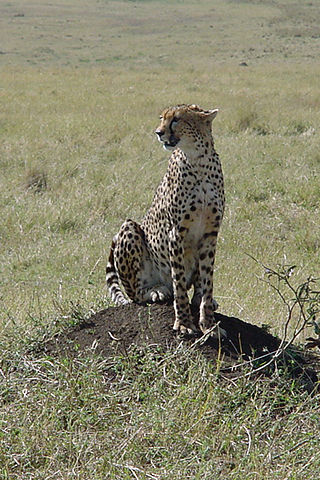Plot
In the southern plains of the Maasai Mara National Reserve in Kenya, lives Mara, a six-month-old lion cub, with her mother Layla, who both belong to the River pride, led by Fang, an old male lion, named after his remaining fang after he gets a distinctive broken tooth because of an earlier fight. In the northern plains of the Maasai Mara, lives Sita, a cheetah who has just given birth to five cubs to take care of. Sita and her cubs coexist with another lion pride led by a large male named Kali, who wishes to expand his pride and territory by taking over Fang's own with the help of his four sons, which however he cannot reach as both sides are divided by the Nile crocodile-infested Mara River.
One day, Sita's cubs are playing while Kali and the largest of his sons are on patrol. Sita, seeing them as a serious danger to her cubs, goads both lions, so as to lure them away, but after the confrontation, the cubs have scattered. Sita desperately calls for them. As it gets darker, hyenas are seen and heard. In the morning, three of her five cubs return to Sita. Although she continues to call for the other two cubs, it's clear that they have been killed by hyenas. Meanwhile, Layla is injured by a zebra's kick while hunting. As the wildebeest begin to migrate to greener pastures, so does the River pride, but due to her injury and old age, Layla has trouble keeping up. Mara stays alongside her mother and tries to help on her way. Soon, they begin to lose track of the pride. Knowing that Mara needs her family for her survival, Layla forces through her injury, and they soon find themselves within the River pride once more.
As time passes in the northern side, Sita's cubs thrive, and begin to show more of their cheetah nature. One day, a gang of three adult cheetah brothers roaming about zone in on Sita. Again, Sita finds herself having to divert attention from rivals so that they do not find her cubs. However, being fellow cheetahs, they do not tire as easily as lions do; and soon, the brothers separate Sita from her cubs. As they circle them, the cubs stand their ground and hiss at the bullies, meaning they have inherited their mother's prowess and bravery. Before the cheetah brothers can do anything, a passing elephant chases them away – meaning that in the savanna, even bullies get bullied.
Some time later, the river has lessened. Kali and his largest son take advantage of it so they can cross and begin their assault on the River pride. They head towards the southern territory. Fang, upon seeing them approaching, runs for his life, but Layla does not back away – knowing that Mara and the other cubs could be killed should the assault succeed, she fearlessly attacks the rivals. Soon, the other lionesses, inspired by Layla's courage, join in the fight. Kali and his son are defeated and leave the area, though they remain on the southern side of the river. Victory completed, Fang returns, and life returns to normal for the pride as well. Layla has been injured ever further during the fight. Seeing that she might not make it, on a rainy day – which the lions take advantage of to bond with each other – for Mara's sake, she goes to her sister Malayka – who has cubs of her own – and reconnects with her so as to maintain a spot in the pride for Mara. Once she sees that Mara is accepted by Malayka, Layla slips away from the pride to find a quiet place to die. Meanwhile, hyenas approach Sita and her cubs, but the brave mother cheetah, having already lost two cubs to them, does not back away; sure enough, she attacks them fearlessly, not letting them anywhere near her cubs. Finally, the hyenas give up the fight and leave – Sita's bravery has kept the remaining cubs alive and free from danger.
As time goes by, Kali and his largest son reunite with the other three sons. Together, they return to the River pride for another assault. Upon seeing them, Fang runs away for the second time, never to be seen or heard from again – if he is to ever return, he would be shown no mercy. Kali takes over the pride and exiles Fang's cubs, including Mara – now a young adult. Her male cousins are seen as the number one threat to Kali and his sons, so they hunt them down. Seeing that they can no longer stay within their pride, the young males have no choice but to cross the river, even though its level has grown and it is infested with crocodiles, nonetheless, they reach land unscathed. The lionesses initially refuse to admit Kali as their leader, the wound of losing their cubs still far too fresh in their minds. Mara tries to live on her own and fend for herself, but she was banished before she was taught to hunt, and finds her first attempts at catching meals on her own, even small warthogs and especially big rhinos and buffaloes, humiliatingly unsuccessful and learns that there are benefits in belonging to a pride. Meanwhile, Sita & her cubs follow the gazelle herds to the River Pride's domain, where they settle down while getting into a feud with the River Pride.
Soon the wildebeest return, and the lionesses begin to hunt for their new cubs – Kali's offspring, having made peace with him and his sons. Mara successfully hunts and feasts. Soon after, she proves herself to the pride, and is at last welcomed back – Layla's sacrifice for raising her cub was not in vain. Meanwhile, Sita's cubs are now young adults, and they're thriving. They hone their hunting skills, they practice on a serval and a jackal, and even get to cross the river. Afterwards, they encounter hyenas then Kali's pride, and learn to stand up to hyenas like a true brave cheetah does, and to avoid and outrun lions instead of hunting them. Finally, they successfully hunt an antelope for food. Sita, seeing that her cubs are now ready to forge their own path, leaves them and returns to the solitary life of a cheetah. The narrator shows that Mara and Sita's cubs are the finest examples of a mother's love.
During the credits, it is shown that Sita's cubs went their separate ways & she has become one of the most successful cheetah mothers to roam the plains. Mara has been accepted by her pride and is now ready for motherhood herself, Kali still reigns supreme on both sides of the river, and the filmmakers are still looking for Fang.














